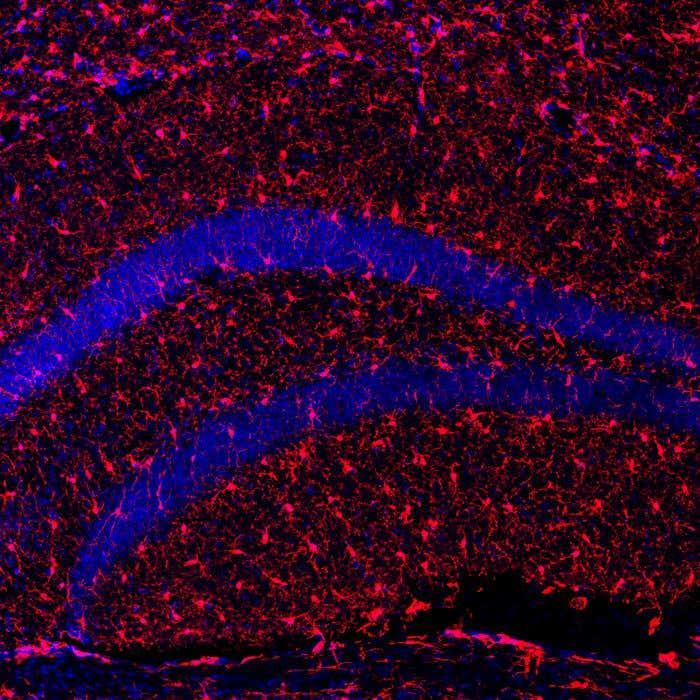Breakthrough new protein could help people live longer and stay healthier
Boosting the Klotho protein helps mice live longer and age healthier, pointing to new anti-aging treatments for humans.

Scientists at Universitat Autònoma de Barcelona show that increasing the Klotho protein in mice boosts lifespan, muscles, bones, and brain health. (CREDIT: INc-UAB)
Getting older brings many changes, but not all are welcome. Over time, your body naturally loses muscle and bone mass. This leads to weakness, frailty, and a higher risk of falls. Your brain also starts to change. Neurons begin to break down, and diseases like Alzheimer’s become more likely.
But what if there was a way to slow down these effects—without waiting for illness to strike?
Researchers from the Universitat Autònoma de Barcelona (UAB) may have found a promising path.
In a groundbreaking study led by Professor Miguel Chillón and published in Molecular Therapy, scientists discovered that a protein called Klotho—when boosted—helps mice age better. The treated mice lived longer and stayed healthier in both body and mind.
Klotho isn’t new to science. It’s already known for fighting inflammation and oxidative stress, two major drivers of aging. But this study focused on a special version called secreted Klotho, or s-KL, which floats freely in the body and doesn’t interfere with other systems like calcium metabolism.
A Safer Way to Support Aging
To deliver s-KL, the research team used a gene therapy method involving adeno-associated viruses (AAV9). These viruses were engineered to carry the genetic code for s-KL into the mice’s cells. The goal was to get the cells to produce more of the protein on their own.
Two delivery routes were used. One was through the bloodstream, and the other directly into the brain. This two-way method made sure s-KL reached key areas, especially those related to muscle and memory.
Related Stories
Three groups of mice received treatment. One got it at six months old (young adulthood in mice), another at 12 months (middle age), and the third group served as a control.
By the time the mice reached 24 months of age—the human equivalent of around 70 years—those treated with s-KL looked very different from their untreated peers. They lived 15–20% longer on average. They had more muscle, stronger bones, and better brain function.
Protecting Muscle and Bone
Muscle aging starts early. By age 30, people begin to lose about 3%–8% of their muscle mass every ten years. This process, called sarcopenia, worsens with time. Muscles shrink and become filled with fat and fibrous tissue. At the same time, the body's ability to repair muscle also drops.
But in the study, s-KL-treated mice kept their muscle strength. Their muscle fibers were larger, and there was less fibrosis—a sign of tissue damage. The protein also boosted the activity of satellite cells, which help repair muscle. This means the mice not only held onto muscle, but also stayed more active.
Bone health improved too, especially in female mice. Normally, aging bones become thinner and weaker, both on the outer shell and the inner meshwork known as trabecular bone. But with s-KL, the shape and structure of this bone tissue stayed more intact. That suggests a potential way to guard against osteoporosis—a common cause of fractures in the elderly.
“KL treatment improved physical fitness, related to a reduction in muscle fibrosis and an increase in muscular regenerative capacity,” the researchers noted.
Sharper Brain, Stronger Signals
The brain also benefits from higher levels of s-KL. As you age, neurons stop regenerating, and brain plasticity fades. Memory gets weaker, and diseases like Alzheimer’s and Parkinson’s become more likely. Part of the problem is that support cells in the brain—called glial cells—don’t work as well. Some even become harmful, triggering inflammation and stress in brain tissue.
In the treated mice, researchers saw more new neurons forming in the hippocampus, the brain's memory center. Immune activity also increased, especially processes related to phagocytosis. That’s when cells clean up damaged or toxic material—kind of like housekeeping for the brain.
This cleanup process matters. As microglia and other brain cells age, they lose their ability to remove waste. That buildup may play a role in cognitive decline.
Joan Roig-Soriano, first author of the study, explained the value of these results: “We now have viral vectors that can reach the brain after being administered intravenously, which would make it easier to safely transfer this therapy to humans.”
Transcriptomic analysis—a detailed look at gene activity—showed higher signals related to immune response and brain cell regeneration. That suggests s-KL could protect brain health even before visible disease appears.
Toward Human Trials and Real-World Use
Even though the study focused on mice, its impact could reach far beyond the lab. The team has already filed several patents. One covers using Klotho for cognitive support. Others protect its use for boosting bone and muscle strength or increasing lifespan.
The idea is not just to help people live longer, but to extend their health span—the years you feel good, not just alive.
The team also stressed that gene therapy may not be the only option. Direct delivery of the protein, perhaps as a drug, could work too. However, scientists still need a reliable method to get s-KL into the right tissues without triggering side effects.
In past studies, other forms of Klotho, like p-KL, showed side effects related to mineral balance. s-KL, in contrast, appears safer while still providing wide-ranging benefits.
“If we can find a viable delivery method, s-KL could make a significant contribution to improving people’s quality of life,” the researchers said. “It could help build the healthiest society possible.”
The stakes are high. With people living longer than ever, the pressure on health systems continues to rise. Experts estimate that by 2060, a quarter of people in developed countries will be over age 65. Without new treatments, age-related illnesses could overwhelm public and private care systems.
The study’s findings offer hope not just for treating diseases, but for changing how we think about aging itself. Instead of waiting for problems to appear, science may soon give us tools to slow or stop them before they begin.
Klotho might be one of those tools. By protecting muscles, bones, and brains all at once, it could offer a future where aging doesn’t have to mean decline.
Note: The article above provided above by The Brighter Side of News.
Like these kind of feel good stories? Get The Brighter Side of News' newsletter.



